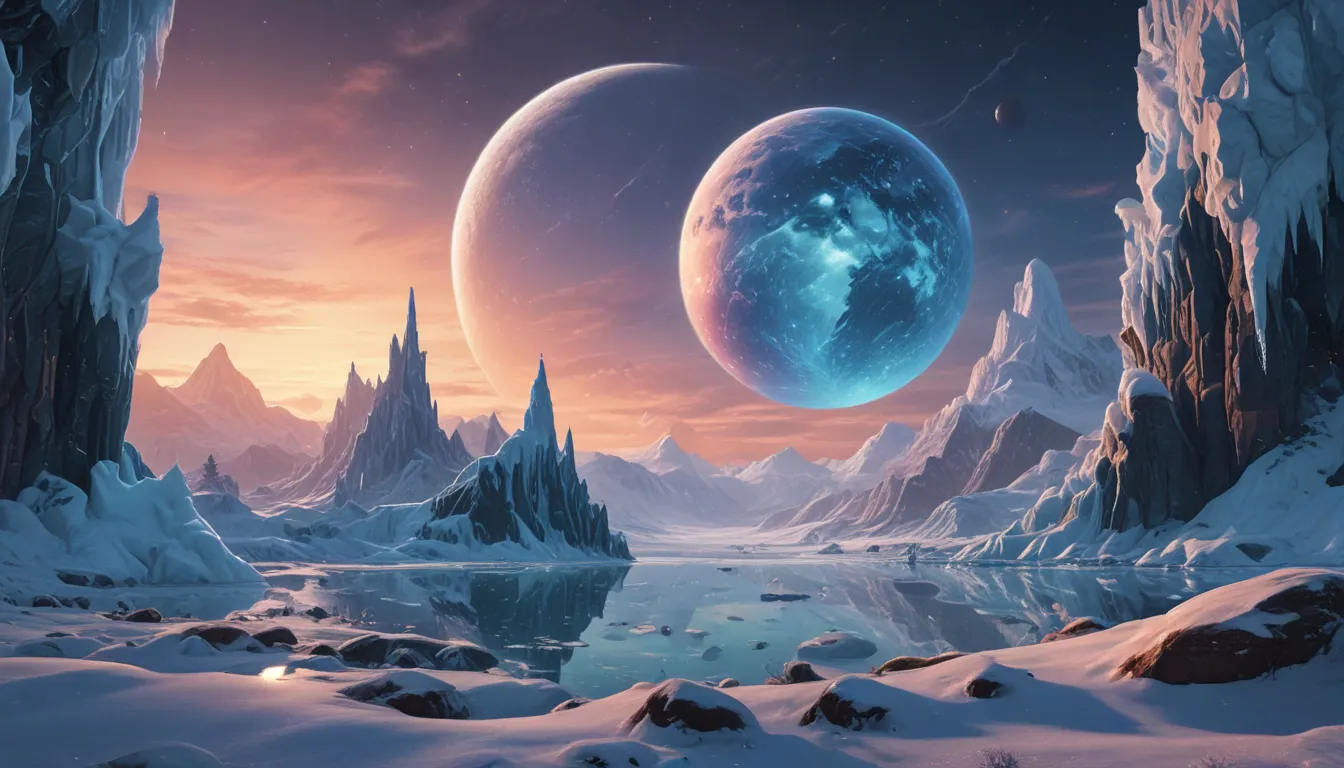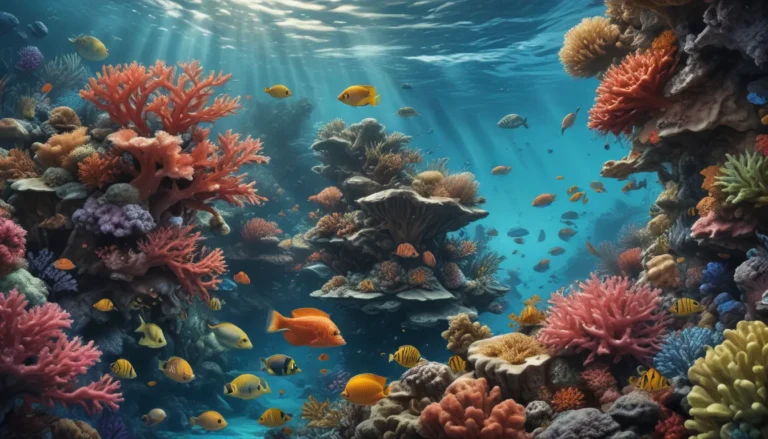The pictures we use in our articles might not show exactly what the words say. We choose these pictures to make you interested in reading more. The pictures work together with the words but don’t take their place. The words still tell you the important facts.
The cryosphere, encompassing the frozen parts of the Earth and other celestial bodies, offers a captivating glimpse into the history and dynamics of our planet and beyond. While the mention of the cryosphere often brings images of Earth's polar ice caps to mind, the icy landscapes of other planets and moons hold their fair share of surprises as well. In this article, we will delve into 10 surprising facts about the planetary cryosphere that shed light on the potential for life beyond Earth and expand our understanding of the universe.
Unveiling the Fascinating Planetary Cryosphere
The planetary cryosphere refers to the frozen water and volatile substances found on planets, moons, and asteroids, offering valuable insights into extraterrestrial life. Cryovolcanism, methane lakes, and icy atmospheres are just a few of the remarkable features that make the planetary cryosphere a captivating area of study for scientists exploring our solar system.
Frozen Mysteries of Various Celestial Bodies
The cryosphere extends beyond Earth and exists on various celestial bodies within our solar system, including the icy moons of Jupiter and Saturn, such as Europa and Enceladus, and Mars, where ice caps and frost-covered terrain have been observed. This frozen landscape of these celestial bodies presents a unique opportunity for scientific exploration and discovery.
Unearthing Frozen Water Beyond Earth
Beyond our own planet, frozen water can be found on other planets and moons, shaping their landscapes and environments. This discovery opens up new avenues for scientific inquiry and fuels speculation about the potential for extraterrestrial life in the vast reaches of space.
Glacial Tales of Mars
Mars, our neighboring planet, hosts glaciers composed of frozen water and carbon dioxide, mirroring Earth's glaciers in many ways. By studying these Martian glaciers, scientists gain valuable insights into the planet's climate history and evolution over time.
The Enigmatic Cryovolcanism Phenomenon
Cryovolcanism, a unique geological process seen on icy moons like Triton and Enceladus, involves the eruption of cryomagma from beneath the surface, creating icy plumes and distinctive surface features. This phenomenon adds a layer of complexity to our understanding of planetary geology and dynamics.
Titan’s Methane Lakes: A Cosmic Anomaly
Titan, Saturn's largest moon, boasts lakes and seas filled not with water, but liquid methane. These methane lakes on Titan make it a standout celestial body in our solar system, showcasing the diversity of environments that exist beyond Earth.
Frozen Wonders in Planetary Atmospheres
On planets like Neptune and Uranus, the cryosphere extends into their atmospheres, with icy clouds and extreme temperatures defining the characteristics of these frigid gas giants. Exploring these frozen atmospheres presents a unique opportunity to understand the complexities of planetary climates and weather systems.
The Rise of Cryobots for Exploration
In the quest to uncover secrets hidden beneath the icy surfaces of celestial bodies like Europa and Enceladus, scientists are developing cryobots – robotic vehicles designed to navigate these frozen terrains and search for signs of life. This innovative technology promises to revolutionize our approach to exploring extraterrestrial environments.
Pluto’s Cryovolcanic Mountains: A Geological Marvel
Despite its reclassification as a dwarf planet, Pluto continues to intrigue with its cryovolcanic mountains formed by the eruption of icy materials. This cryovolcanic activity has played a significant role in shaping Pluto's surface and geological features over time.
Understanding Climate Change Through the Cryosphere
Studying the cryosphere on Earth and other celestial bodies is essential for comprehending the past and present climate changes occurring throughout our solar system. This research provides crucial insights that inform future scientific endeavors and space exploration missions.
Embarking on a Frozen Odyssey
As we navigate the icy wonders of planetary cryospheres, we unlock new and unexpected facts about their composition, behavior, and impact on planetary processes. The intricate connections between the cryosphere, climate, and geology offer a deeper understanding of the universe's history and potential evolution.
In conclusion, the planetary cryosphere stands as a testament to nature's complexity and diversity, beckoning us to explore its frozen realms with curiosity and wonder. By unraveling the mysteries of icy landscapes across our solar system, we gain valuable insights into the past, present, and potential future of planetary environments. From hidden lakes on Mars to methane seas on Titan, the cryosphere holds the key to unlocking the secrets of the cosmos and discovering the possibility of extraterrestrial life.
FAQs: Exploring the Cryosphere
-
What is the cryosphere?
The cryosphere encompasses the frozen water part of Earth's system, including snow, ice, glaciers, icebergs, and permafrost. -
Do all planets have cryospheres?
While not all planets have cryospheres, many celestial bodies in our universe feature icy regions or bodies of water beneath their surfaces. -
How does the cryosphere impact planetary climate?
The cryosphere plays a crucial role in shaping the planet's climate by reflecting sunlight back into space and influencing ocean currents' circulation. -
Can the cryosphere support life?
While most cryospheres may seem inhospitable, environments like subsurface oceans on icy moons and beneath permafrost hold potential for supporting life. -
Why is studying the cryosphere important?
Studying the cryosphere enables us to better understand planetary climate dynamics, habitability prospects, and the potential for extraterrestrial life exploration.
Dive Deeper into Earth’s Icy Realms
Captivated by planetary cryospheres? Embark on a journey through Earth's icy wonders, where glaciers, polar ecosystems, and permafrost unveil nature's intricate tapestry. Explore the role of glaciers in shaping landscapes, the impacts of climate change on these frozen realms, and the unique adaptations of polar species. Delve into the secrets of permafrost, its global distribution, and the consequences of thawing on ecosystems and communities worldwide. Join us on an enlightening exploration of Earth's icy domains, where beauty, resilience, and environmental significance converge.
Join Us in our Quest for Credible Facts
At the core of our mission lies a commitment to delivering engaging, reliable content that informs and inspires readers like you. Each fact shared on our platform is contributed by real users, reflecting a diverse range of perspectives and insights. Our dedicated team of editors meticulously reviews each submission to ensure accuracy and credibility, guaranteeing that the information we provide is not only fascinating but also trustworthy. Trust in our dedication to quality and authenticity as you embark on a journey of discovery and learning with us.
In conclusion, the planetary cryosphere opens a window into the wonders of our universe, inviting us to explore and understand the frozen landscapes that shape planetary environments. By unraveling its mysteries, we uncover the potential for life beyond Earth and gain a deeper appreciation for the interconnected systems that govern our solar system's dynamics. As we gaze upon the icy wonders of the cosmos, let us remember that the cryosphere holds the key to unlocking the secrets of the universe and revealing the boundless possibilities that lie beyond our home planet.






